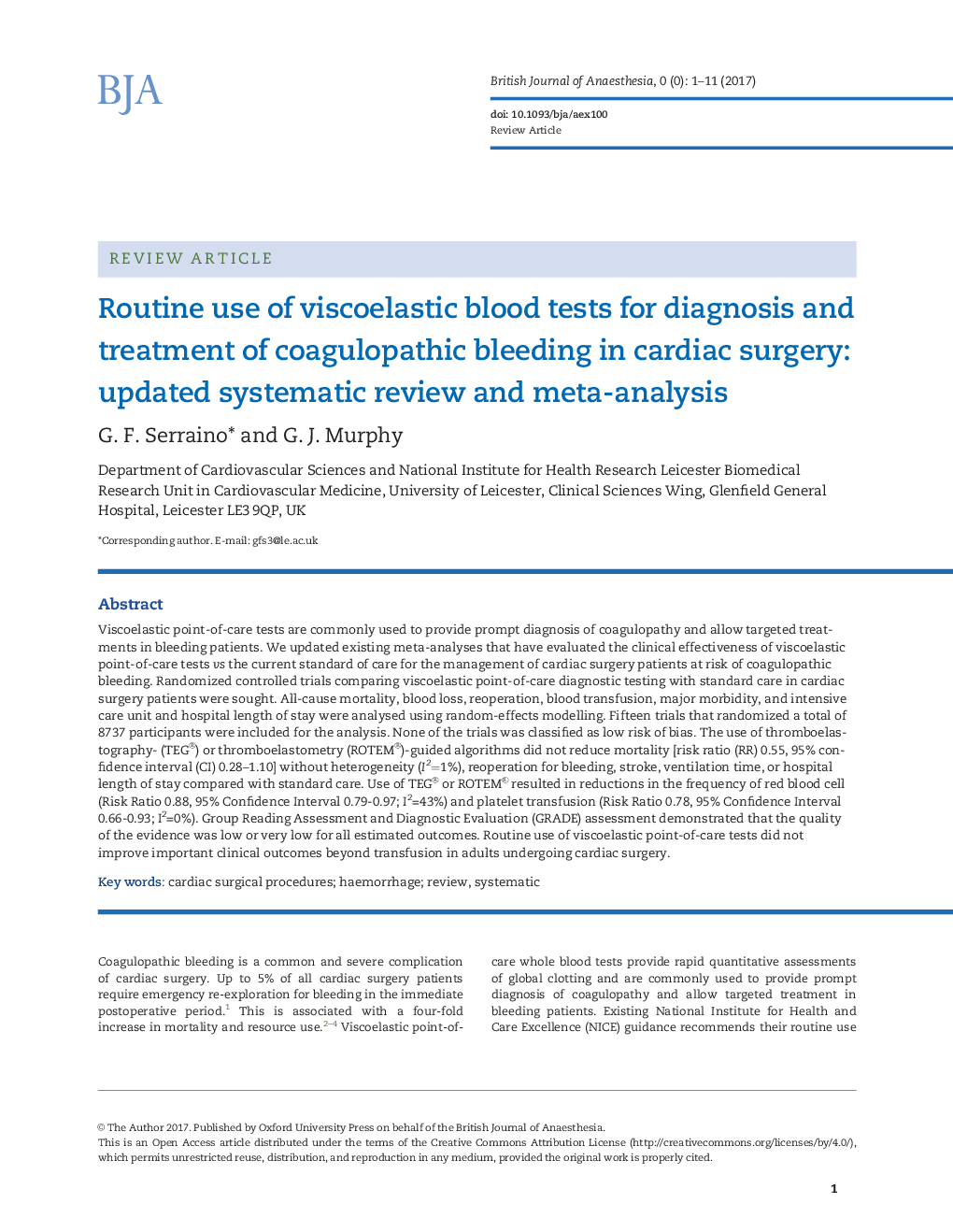| Article ID | Journal | Published Year | Pages | File Type |
|---|---|---|---|---|
| 8930243 | British Journal of Anaesthesia | 2017 | 11 Pages |
Abstract
Viscoelastic point-of-care tests are commonly used to provide prompt diagnosis of coagulopathy and allow targeted treatments in bleeding patients. We updated existing meta-analyses that have evaluated the clinical effectiveness of viscoelastic point-of-care tests vs the current standard of care for the management of cardiac surgery patients at risk of coagulopathic bleeding. Randomized controlled trials comparing viscoelastic point-of-care diagnostic testing with standard care in cardiac surgery patients were sought. All-cause mortality, blood loss, reoperation, blood transfusion, major morbidity, and intensive care unit and hospital length of stay were analysed using random-effects modelling. Fifteen trials that randomized a total of 8737 participants were included for the analysis. None of the trials was classified as low risk of bias. The use of thromboelastography- (TEG®) or thromboelastometry (ROTEM®)-guided algorithms did not reduce mortality [risk ratio (RR) 0.55, 95% confidence interval (CI) 0.28-1.10] without heterogeneity (I2=1%), reoperation for bleeding, stroke, ventilation time, or hospital length of stay compared with standard care. Use of TEG® or ROTEM® resulted in reductions in the frequency of red blood cell (Risk Ratio 0.88, 95% Confidence Interval 0.79-0.97; I2=43%) and platelet transfusion (Risk Ratio 0.78, 95% Confidence Interval 0.66-0.93; I2=0%). Group Reading Assessment and Diagnostic Evaluation (GRADE) assessment demonstrated that the quality of the evidence was low or very low for all estimated outcomes. Routine use of viscoelastic point-of-care tests did not improve important clinical outcomes beyond transfusion in adults undergoing cardiac surgery.
Related Topics
Health Sciences
Medicine and Dentistry
Anesthesiology and Pain Medicine
Authors
G.F. Serraino, G.J. Murphy,
